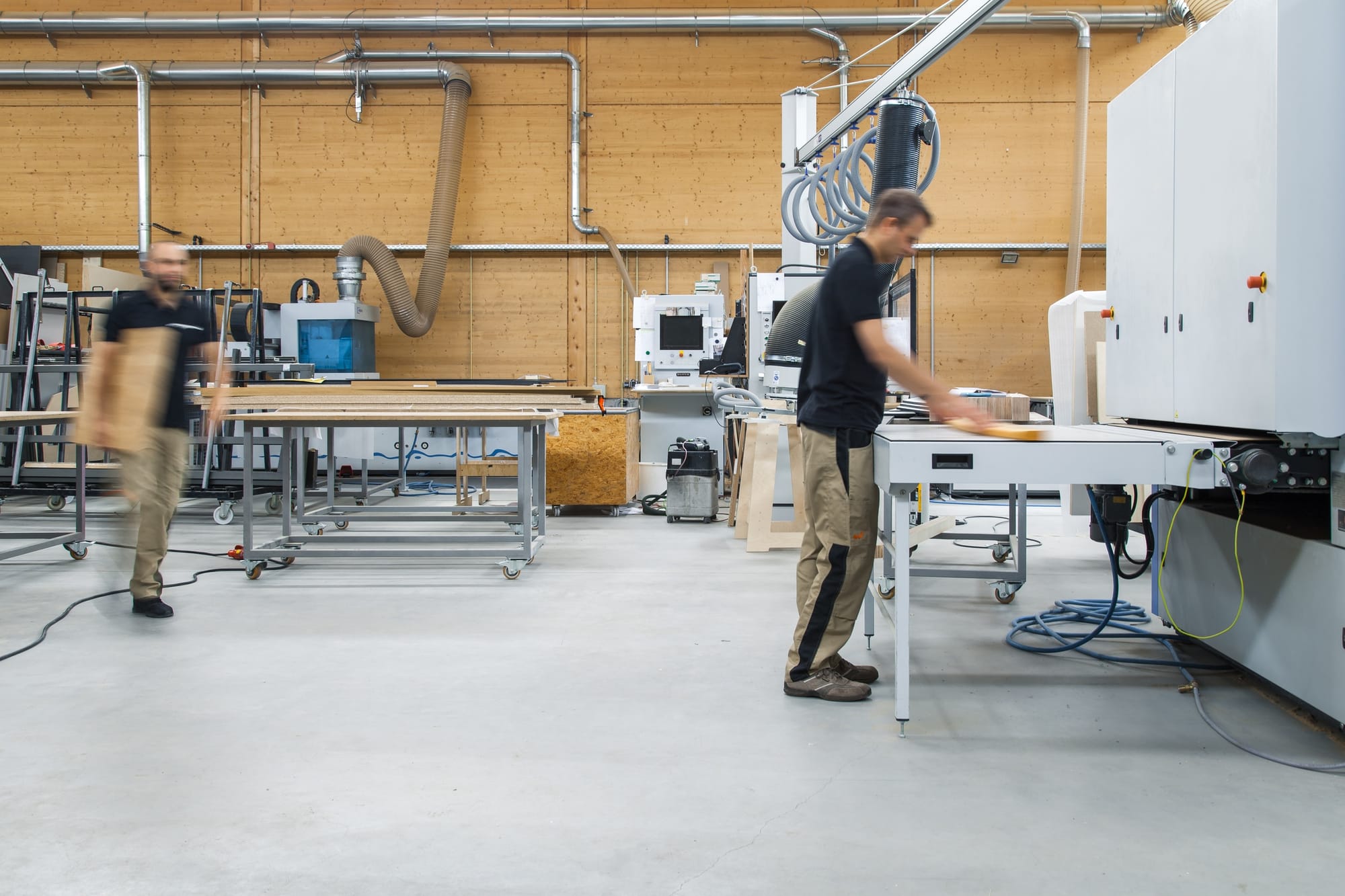Furniture and Fixtures

The Company
A manufacturer of bespoke solid wood furniture from shelving and mantels to beds and dinning tables. Every piece is made to order from wood derived from sustainably managed FSC standard forests. With over 10 years’ operating experience this UK company has grown and developed a workforce of over 30 people, operating a number of shift patterns, with overtime working to cope with demand.
The Challenge
The main challenge of this assignment was to improve efficiency within the workshop. The business was going through a rapid period of growth, however their processes reflected those of a ‘jobbing shop’. On time delivery performance was poor, customer returns were not managed, production areas were cluttered. Although the site was profitable, it was evident that change was inevitable.
The Approach
To best support the business whilst addressing the challenges they faced, the business agreed to work on developing their workforce and using a situational approach to tackle issues while educating the team. This would be instrumental in supporting the necessary changes to manufacturing that were much needed to take this site to a more ‘end customer’ focused production facility.
Introduction to Lean
All production personnel across all shifts were introduced to Lean thinking, giving them an understanding of why the business needs to change and how this approach fits in with a modern manufacturing setting. Feedback from the operatives was extremely positive, confirming they were becoming frustrated with current methods – they want to come to work to do a good job, not deal with the repetitive issues that they faced daily. Further development was carried out with a number of the middle management team to give each of them a better understanding of how they needed to support change, and the lean thinking that sits behind the decision to introduce new methods of working.
Value Stream Mapping
A mixed model value stream was identified with all products going through the same processes. A ‘Current State Map’ was created with opportunities for improvement identified, and a ‘Future State Map’ developed to model improvement and demonstrate a vision for the facility. Action plans were created in the form of Master Schedules with tasks identified and assigned to take the site from current to future state.
Hoshin Kanri
Senior Leadership were introduced to Hoshin Kanri and the Site and Departmental Strategy was created together with supporting documentation to support the growth of the business.
Sales and Production Analysis
Sales data was analysed to capture the order profile from which Runners, Repeaters and Strangers were identified across all current products. Production data analysis confirmed that a batch production approach to orders was currently being applied.
Workshop Layout
Work areas were dark and cluttered with lots of internal partitions which initially were formed to create a physical barried between processes, however they restricted flow of product and had a negative impact on making the process visual. Partitions were removed where possible to open up the work areas and generate more usable floorspace, dismissing the management belief that larger premises were needed to support business growth.
Process Optimization
A Yamazumi Chart (a stacked bar chart that shows the source of the cycle time in a given process) was compiled to visually represent optimisation capability of the current process which was considerably unbalanced. Bottlenecks in the assembly process were highlighted and changes to the process were made to level the work content across all workstations.
FIFO Lanes
Where differing processing times existed, we introduced FIFO lanes that would allow a build-up of a predetermined level of inventory. This would allow the team leaders to visually manage the process, assess resources and reallocate where necessary.
Single Point Scheduling - Heijunka
Current scheduling of production was identified as the root cause of the poor customer lead time. Introducing Heijunka allowed the team to reduce unevenness in production requirements. Establishing Single Point Scheduling allowed the planning team to utilise capacity in the best possible way and react quickly to demand changes.
8 Step Practical Problem Solving
Facilitation of several problem-solving activities relating to Customer returns, identified the root cause of assembly faults and packaging/transportation damage. Corrective actions were implemented to improve customer service level and reduce returns and replacement costs.
Short Interval Control
Short Interval Control was introduced at all workstations to monitor performance against production targets and identify lost time incidents.
Operator Ergonomics
Ergonomic assessments were carried out across all operations. Improvements made with the introduction of trolleys to move parts around the process, the use of anti-fatigue matting at workstations as well as operator job rotation to reduce risk of RSI.
Kanban
Production Kanban sizes were calculated and introduced for standard parts and consumable items. This reduced minor stoppages and excessive waiting times.
Improved Information Flow
A redesign of ‘Route Cards’ to give the production operator more information and provide traceability for internal quality issues.
Kaizen Activity
The implementation of several small Kaizen activities to improve efficiency and reduce rework/scrap, supported the introduction of a continuous improvement culture throughout the organization.
Visual Management
Implementation of several Visual Management techniques to identify whether processes were in / out of control for rapid problem solving.
Project Tracking
Introduction and support in the use of Master Schedule documents to manage projects.
Results
Order Lead Time
Lead time improved from 16 weeks to 6 demonstrating a 63% improvement.
Processing Time
Reduced from 269 minutes to 153 minutes.
Labour Hours per Part
Improvement of 46% from 3.19 to 1.73
OTIF
Improvement made from 74% to 96%